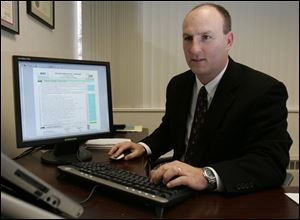
Rich tax intrudes on middle class
2/13/2006
Charles Heid, CPA at Gilmore, Jasion & Mahler Ltd. in Maumee, says the parallel tax system is becoming infamous.
The alternative minimum tax, designed years ago to get the super-rich to pay taxes they were trying to avoid, is increasingly becoming the bane of middle-class, dual-income families.
It s the infamous parallel tax system that no one knows about but is hitting more and more people every year, said Charles Heid, with the Maumee accounting firm of Gilmore Jasion & Mahler Ltd.
It is estimated that 4 million taxpayers for 2005 will pay the tax, with families making roughly $150,000 almost sure to be hit. The number of taxpayers having to pay the alternative tax could jump to more than 18 million by next year s filing time and to more than 50 million by 2015 under current rules, experts said.
Simply put, the AMT is a separate tax system within the federal income tax code. Taxpayers are required to figure their tax under the regular system, using Form 1040, and then figure it again on Form 6251 to determine their alternative minimum tax. They must pay the higher of the two.
The second system doesn t allow use of personal exemptions or write-offs for state and local income tax, property taxes, tax preparation, and investment expenses.
Taxpayers may be subject to this tax if they have large itemized deductions for state and local taxes, including property and state income tax, or from state sales tax; have exercised incentive stock options; significant deductions for accelerated depreciation; or have had large miscellaneous itemized deductions.
Mr. Heid said families in Ohio making between $150,000 to $200,000 almost always get hit because the state has a very high tax rate for individuals, which must be factored in, as are any taxes for the municipality in which the family resides.
A family with two children and parents who work, making roughly $200,000 a year, will be hit with an AMT bill of roughly $3,000, he explained. To reach that figure, he used a scenario in which the family paid real estate taxes of $5,000, charitable contributions of $2,000, and had an Ohio tax bill of $11,000.
A commission appointed last year by President Bush to study the nation s tax system said the issue of AMT must be quickly addressed, but when that might happen is unclear. Over the next 10 years, the alternative tax is expected to generate $1.2 trillion in tax revenue. Recouping the money would involve raising tax rates, cutting out tax breaks, or both.
Until the matter is straightened out, taxpayers need to consider some options to lower their exposure to the AMT, most specifically planning moves to reduce their adjusted gross income, said Mr. Heid.
Taxpayers can cut adjusted gross income by:
Taxpayers should carefully time when they exercise any incentive stock options, experts say. A large spread between market value and the exercise price is a common cause for unexpected AMT bills.